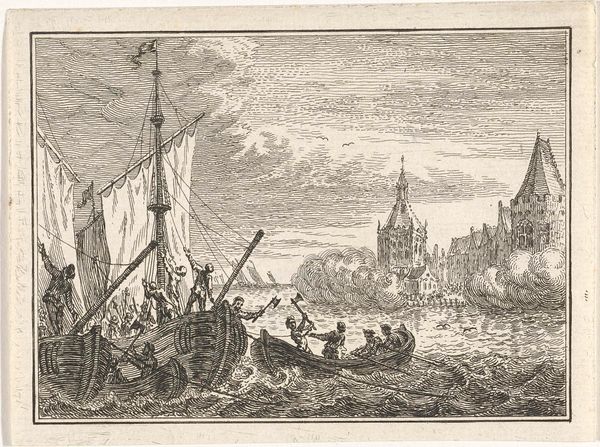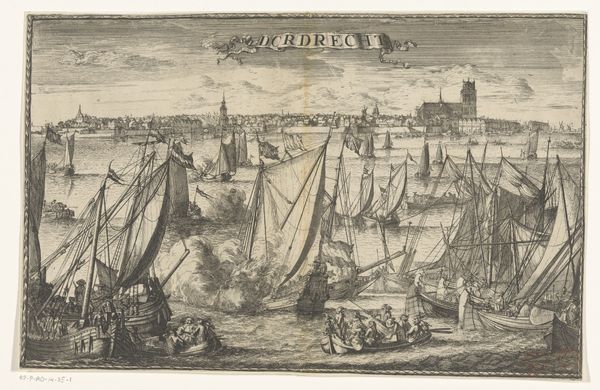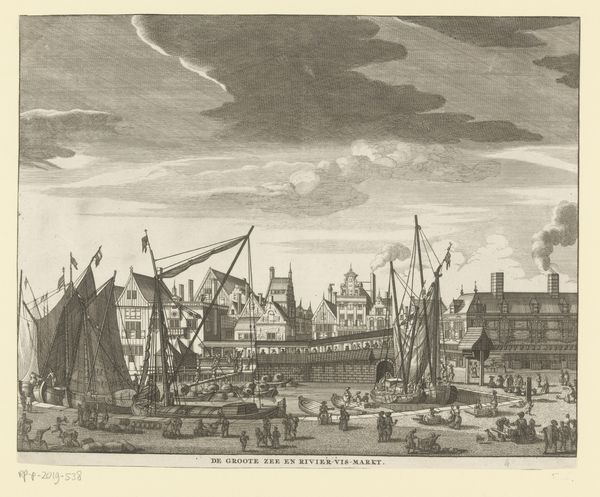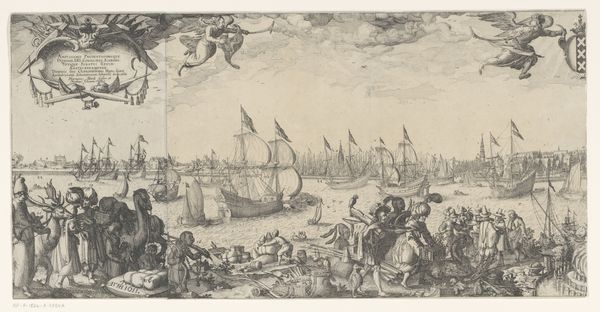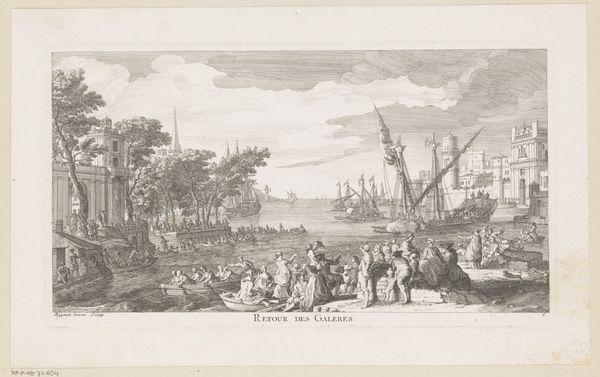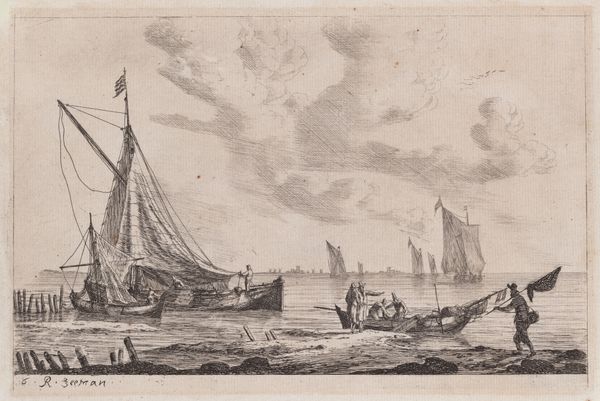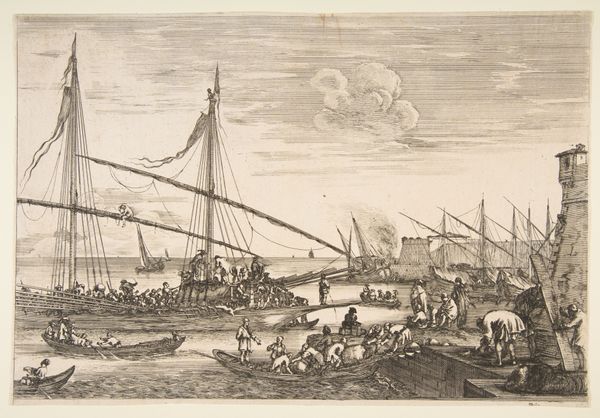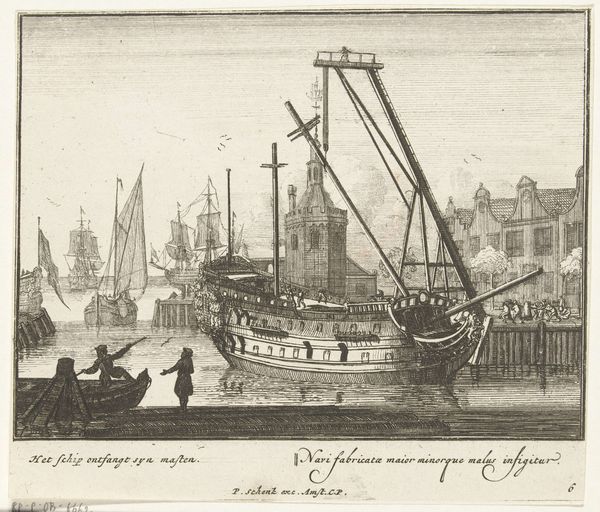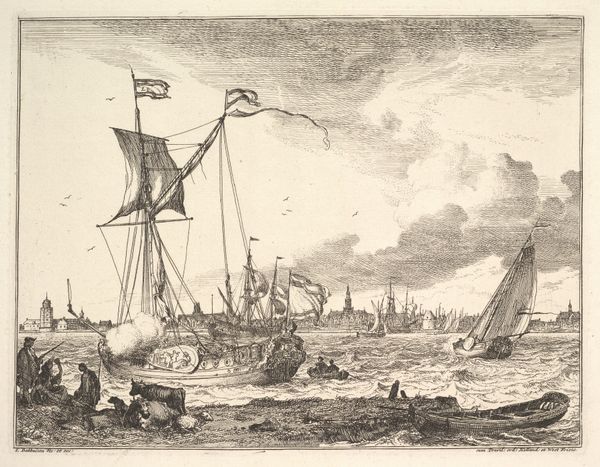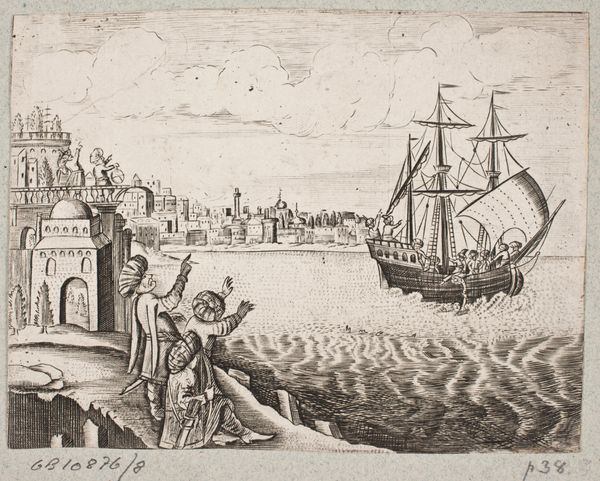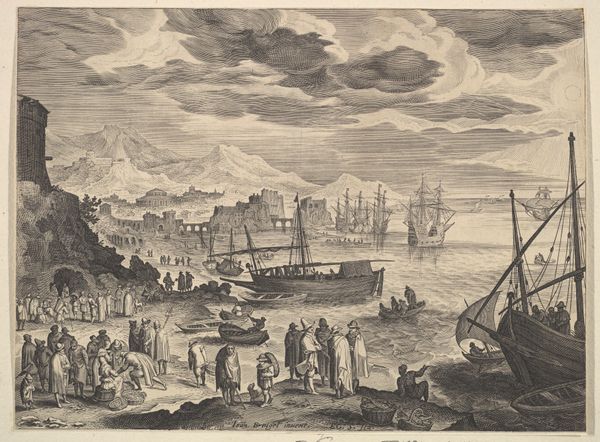
drawing, print, engraving
#
drawing
#
boat
# print
#
landscape
#
cityscape
#
genre-painting
#
history-painting
#
engraving
Dimensions: Sheet: 8 7/8 x 12 1/2 in. (22.5 x 31.8 cm)
Copyright: Public Domain
Curator: Immediately, I’m struck by the level of detail Crispijn de Passe the Elder achieved with engraving techniques. This print, known as "Harbor Scene," presents a lively, bustling panorama. Editor: The density is astonishing. The whole image seems caught between labor and leisure. How does de Passe translate social and political tension through this print? Curator: Well, prints in the early modern period allowed for the mass dissemination of ideas and images, influencing public perception of events and places. "Harbor Scene", though seemingly a snapshot of daily life, can be read as a commentary on commerce and the movement of people. Note how individuals, even within the same vessel, display a hierarchy. Editor: I do see what looks like trade occurring near the shoreline, and others simply embarking and disembarking, but there is no real differentiation given the scale of figures in this work. To what extent is the work about capital, rather than, for example, class? Are the materials, paper and ink, active elements in communicating political concepts here, as it allows for democratization of information through mass production? Curator: I agree it democratizes access to images, but the creation still reflects class structures of its own era. The very act of choosing which scenes to depict, the artistic style employed, reveals an implicit ideology. Editor: But shouldn’t we also be attentive to the technique? Notice the fineness of the lines and how they describe not just forms but textures – the wooden hulls of the ships, the stone buildings of the port. I also notice the ink. Can you imagine how challenging it was to create a durable ink in this era? We can think of the ink here, specifically, as not merely something applied, but an active material driving this artistic innovation in print-making. Curator: Thinking through materials highlights the expertise needed to make such a piece. Engraving itself was a highly skilled labor and also how gender influenced creative output during this period. So how do we assess this artist's choices? What does this seemingly idyllic portrayal reveal about societal conditions, including issues of gender, in harbor cities in the late 16th and early 17th centuries? Editor: Reflecting on materiality allows us to remember the labor embedded in every detail of artistic and mechanical production. Curator: And the enduring need for social discourse and change.
Comments
No comments
Be the first to comment and join the conversation on the ultimate creative platform.

